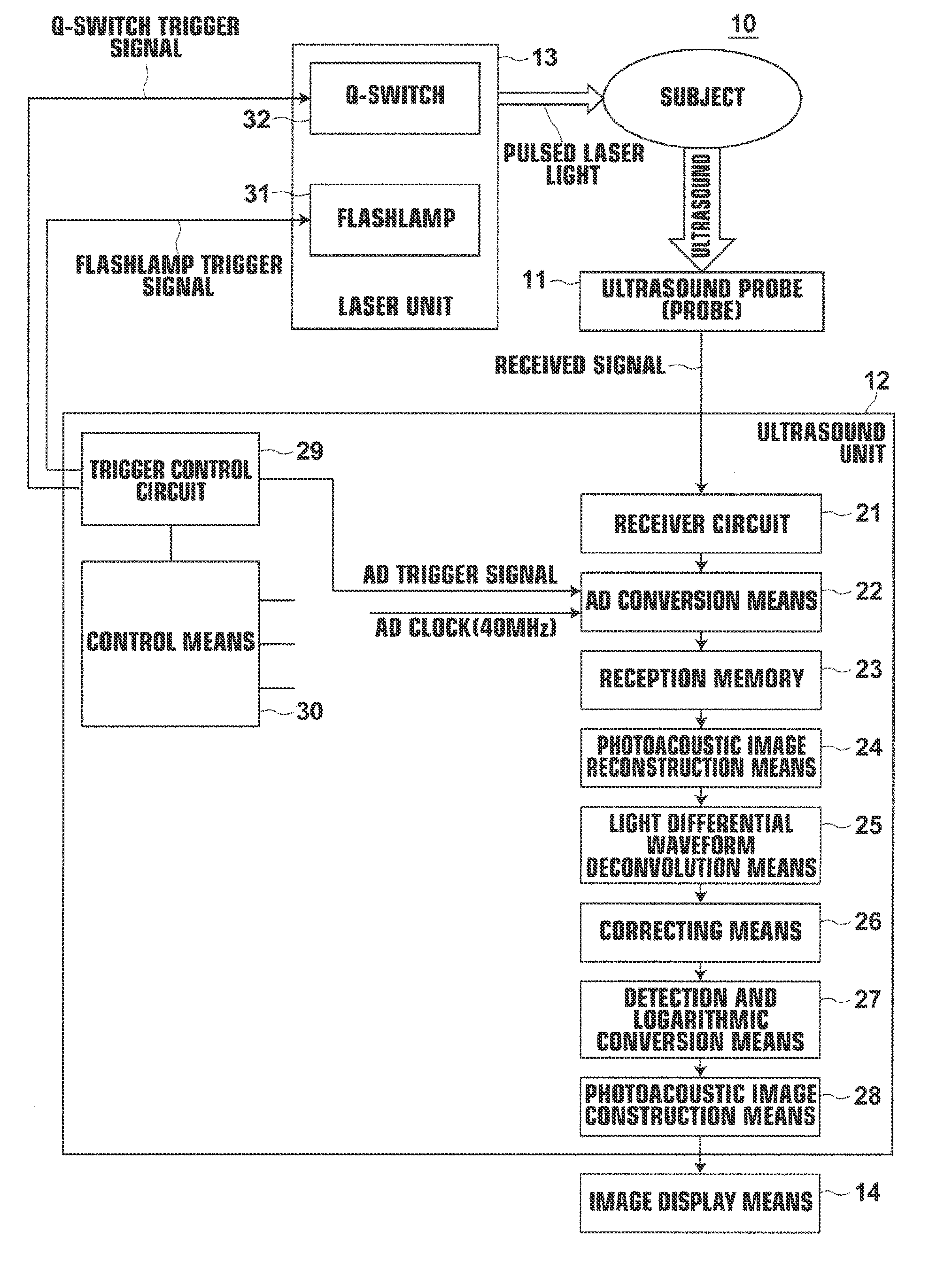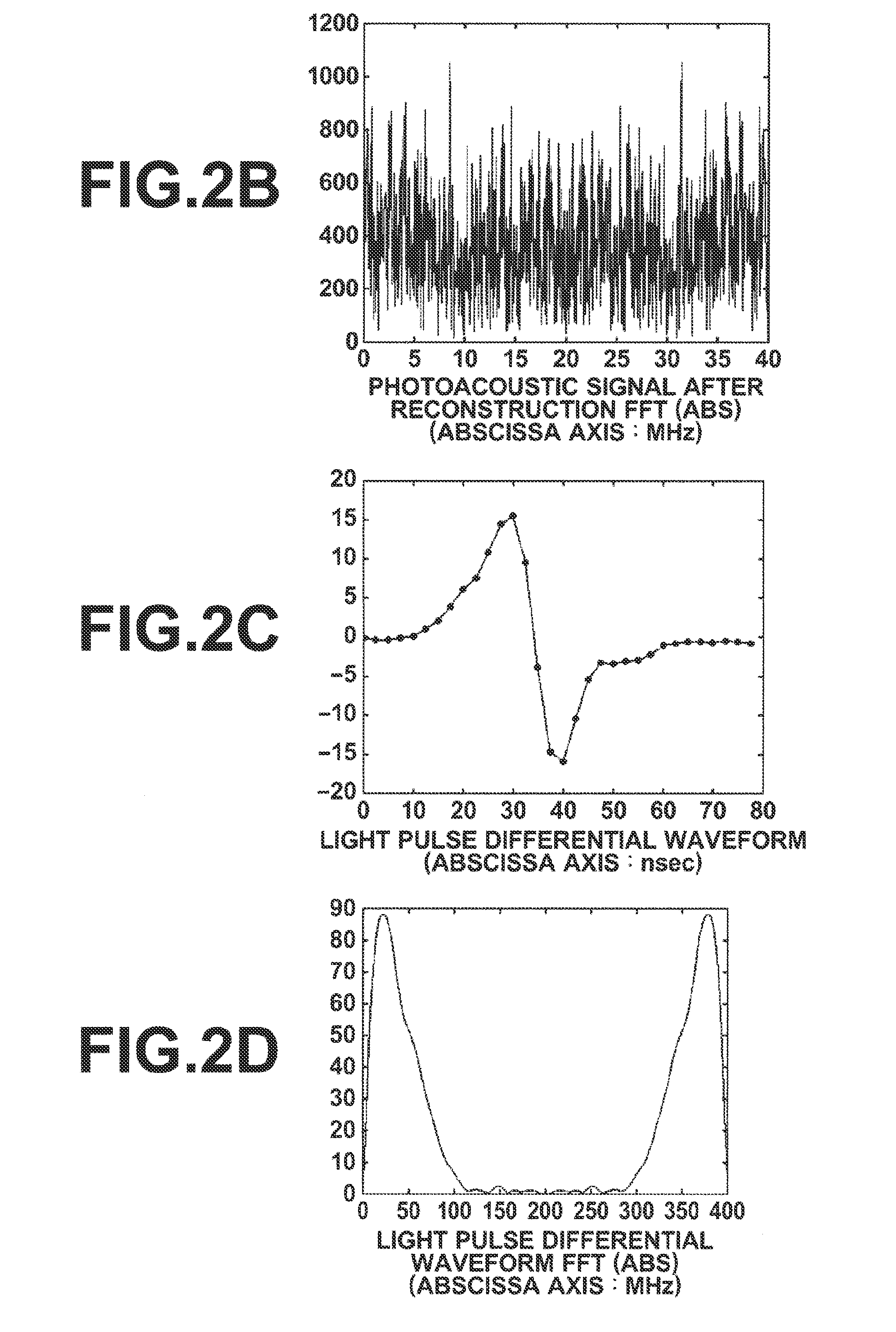Device and method for processing photoacoustic signal
- Summary
- Abstract
- Description
- Claims
- Application Information
AI Technical Summary
Benefits of technology
Problems solved by technology
Method used
Image
Examples
Embodiment Construction
[0059]Prior to describing embodiments of the present invention, the outline of the invention is described. It is assumed here that micro absorptive particles, which are light-absorbing substances, absorb pulsed laser light and a pressure wave (photoacoustic pressure wave) is generated. According to [I. G. Calasso et al., “Photoacoustic Point Source”, PHYSICAL REVIEW LETTERS, Vol. 86, No. 16, pp. 3550-3553, 2001], a pressure waveform pmicro(R,t), which is a photoacoustic pressure wave generated by a micro absorptive particle at a position r and observed at a position R at a clock time t, is a spherical wave of the equation below:
pmicro(R,t)=kr-R(t-r-Rvs)I(t-r-Rvs),
where I(t) is a temporal waveform of light intensity of the excitation light, the coefficient k is a conversion factor when the particle absorbs light and outputs the acoustic wave, and vs is a speed of sound in the subject. Each of the positions r and R is a vector representing a spatial position. As shown by the equation ...
PUM
 Login to View More
Login to View More Abstract
Description
Claims
Application Information
 Login to View More
Login to View More - Generate Ideas
- Intellectual Property
- Life Sciences
- Materials
- Tech Scout
- Unparalleled Data Quality
- Higher Quality Content
- 60% Fewer Hallucinations
Browse by: Latest US Patents, China's latest patents, Technical Efficacy Thesaurus, Application Domain, Technology Topic, Popular Technical Reports.
© 2025 PatSnap. All rights reserved.Legal|Privacy policy|Modern Slavery Act Transparency Statement|Sitemap|About US| Contact US: help@patsnap.com



